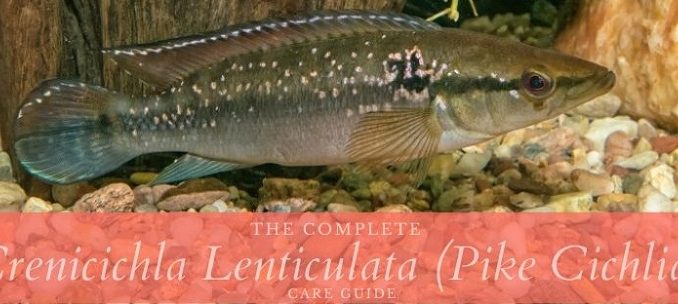
If you have been an aquarist for a while, you might find yourself looking for a challenge. This usually means caring for larger species with an aggressive temperament.
The pike cichlid (Crenicichla lenticulata) definitely fits the bill. It is one of the largest species in the cichlid family and has a boisterous personality that allows it to stand up to larger fish.
This might sound intimidating, but if you have some fishkeeping experience, after a bit of research you’ll be able to care for them with minimal problems. Beginners should look for other options though.
We will outline everything you need to know about caring for this species, including ways to keep their aggression levels down.
TABLE OF CONTENTS
Pike Cichlid Facts & Overview
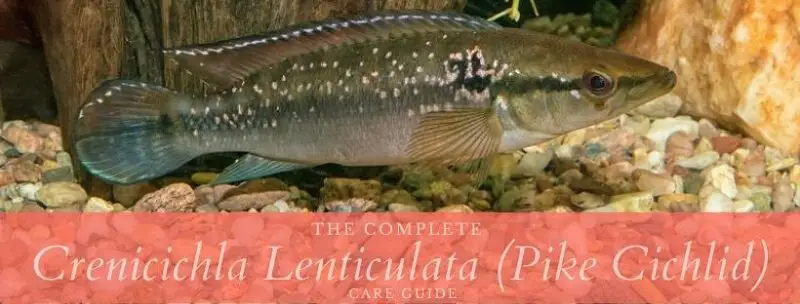
| Category | Rating |
| Care Level: | Expert |
| Temperament: | Aggressive |
| Color Form: | Brown with spots and stripes |
| Lifespan: | Up to 10 years |
| Size: | Up to 15 inches |
| Diet: | Carnivore (piscivore) |
| Family: | Cichlidae |
| Minimum Tank Size: | 90 gallons |
| Tank Set-Up: | Freshwater with caves and plants |
| Compatibility: | Species tank or specialized community |
C. lenticulata is a species in the Cichlidae family. More specifically, it is one of the 93 recognized species of Pike Cichlid in the world. Due to their size, C. lenticulata are a member of the Lugubris group, which contains the biggest members of the genus.
Pike Cichlids are found in tropical and subtropical rivers in South America. C. lenticulata are primarily found in the Rio Negro, but populations are present across the Amazon Basin.
These fish are large and hardy, which helps them to survive for up to 10 years. They could live for even longer depending on the individual and the quality of care.
It is quite rare to see C. lenticulata in home aquariums because of their size and temperament, so the demand for them isn’t very high. For this reason, they are not stocked in many shops.
Search online for a pet store that supplies them. Depending on your area, you might have to travel quite a distance.
The price of a single fish can be considerable. It can vary, but between $100 and $150 is common. This puts many people off, making them an even rarer sight.
Typical Behavior
If you think you can handle their size and price, then hopefully you can cope with their behavior too. They are very aggressive and highly predatory. Any tank mates will always be at risk, though a community tank is possible if designed properly.
Naturally, C. lenticulata primarily eat fish. This means they will eat any tank mates that are smaller than themselves, so bear this in mind. Even tank mates of similar size can be wounded because this species is so powerful.
Creating barriers to break lines of sight is a good way to lower aggression. Similarly, a bigger tank should reduce fighting.
Aggression is at its highest while breeding. If you notice that a fish pair has formed, maybe remove them to protect the rest of your fish.
Most of their time is spent in the middle and lower regions of the tank. They will likely claim a territory and regularly return there.
Appearance
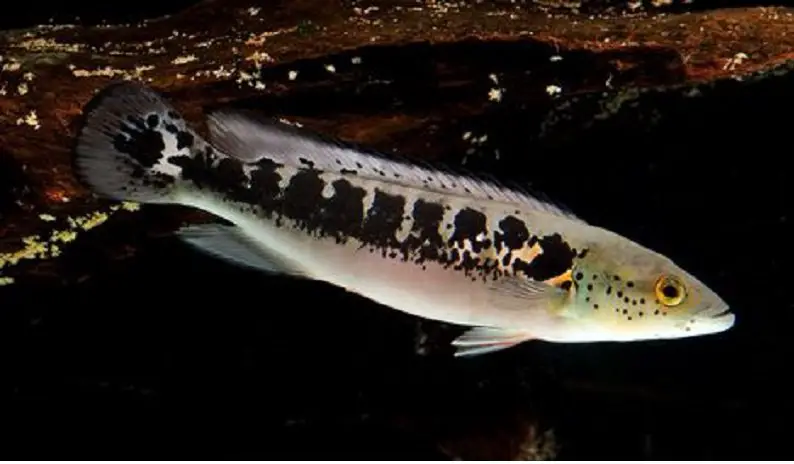
These are beautiful fish, which is why many people choose them despite their drawbacks. They resemble pikes; hence the genus is referred to as ‘Pike Cichlids’.
As one of the largest Pike Cichlids, they can reach lengths of 15 inches. This is much larger than the smallest species (Crenicichla wallacii) which only reaches 2.5-5.5 inches.
A dark stripe runs horizontally from the back of their head to the tip of their tail fin. Smaller stripes usually run vertically from this horizontal stripe to the top of the body.
Their heads are covered in dense spots. This pattern can continue down the body a little way, but the spots become sparse further away from the head.
The fins are short. The pectoral fins are located just behind the head, but the anal, dorsal, and caudal fins are all found at the rear of the body.
If fed a varied and nutritional diet, the fins can develop lavender hues as they grow; these will continue into adulthood.
The best way to sex these fish is to look at the dorsal fin. Females have a white stripe on their dorsal fin, but males don’t.
However, males can have a pink stripe on their dorsal fin, so be careful not to confuse the pink and the white stripes.
Habitat and Tank Conditions
The natural home of C. lenticulata is the Amazon Basin in South America. Since this is where they have evolved to live in the wild, they will be most comfortable when introduced to similar conditions in your aquarium.
In the shallows of the Rio Negro (where they are primarily found) they would be surrounded by debris from trees and rocks. There would also be an abundance of aquatic plants to offer shelter from sunlight and other fish.
The water in this area is soft, warm, and slightly acidic. The Amazon Basin has high biodiversity, so you’ll likely find many other aquarium species with similar preferences.
The Rio Negro has a moderate current, but not too strong. It receives plenty of sunlight too, but C. lenticulata prefers shaded areas.
You should be able to recreate this environment at home with few problems.
Tank Conditions
An effective filter is key to keeping your fish tank clean. The outlet also helps to move the water around and oxygenate it.
If you feel that the water isn’t moving enough, you could try an air pump. A water pump might be too powerful.
A heater is needed to maintain a temperature in the range of 75-86°F. These fish are usually happiest towards the higher end of this range. The water should have a pH of 5.5-6.5 and a hardness between 4-8 dH.
Use a soft sandy substrate to layer the bottom of the tank. This will be most similar to the river beds they come from. Add some driftwood and rocks on top of the substrate, arranging them to form some caves.
By using decorations to block lines of sight, you might be able to reduce the amount of fighting that occurs between your fish. Plant some dense areas of vegetation around the tank. Amazon Swords work well.
A tight-fitting lid on top of the tank is a good idea. This species isn’t known for jumping, but it can happen.
What size aquarium do they need?
You are going to need an aquarium of at least 90 gallons, but the more space your fish has, the more comfortable and less aggressive they will be.
A large tank is important. Not only can C. lenticulata reach 15 inches long, but they can also be fast swimmers that enjoy having space to move around in. Extra space is also useful to help them claim distinct territories.
How many can be kept per gallon?
Space is crucial for reducing fighting and keeping each individual fish happy. Aim to give each additional fish 25-40 gallons.
Tank Mates
Choosing tank mates for this species can be difficult. In the wild they would live around many other types of fish, eating the small ones and staying away from the larger ones. However, they can’t stay away from their tank mates in a confined place like an aquarium.
Their tankmates must be of a similar size or larger, otherwise, they’ll be eaten. They should also be robust and able to defend themselves if a fight breaks out. Some potential options include large Oscars, Parrot Cichlids, Peacock Bass, Lima Shovelnose Catfish, large Plecos, or Geophagus species.
All these species could be wounded by a Pike Cichlid though, so keep an eye on the interactions between your fish. Separate them if fighting is a regular occurrence.
It is recommended that you introduce tank mates to the aquarium before C. lenticulata. This gives them time to establish themselves so that they’ll be better able to cope with a Pike Cichlid once it’s added.
Don’t add any small invertebrates to the tank. Certain individuals will eat them.
Keeping Crenicichla lenticulata Together
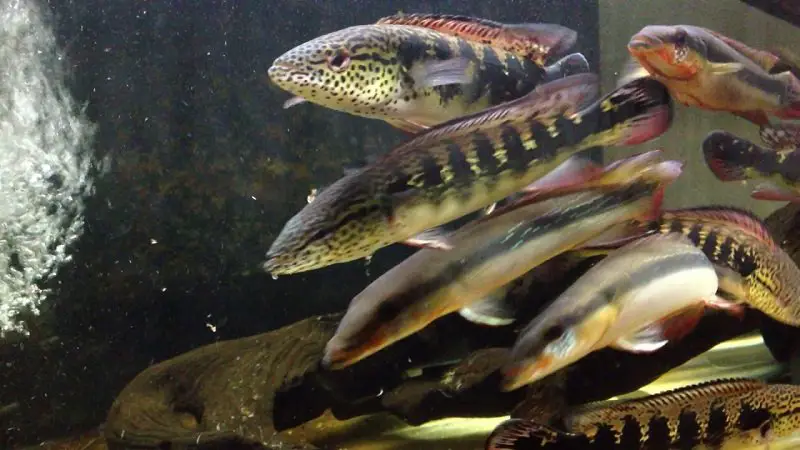
Male C. lenticulata will fight each other over territorial disputes and when competing for a mate. Therefore, it is safest to only keep one male per tank.
The best options are to either keep just one fish per tank or to have a male-female pair. Many people house them in a species tank to avoid compatibility issues.
Care
You should always be trying to keep the conditions of your tank consistently within the preferences of C. lenticulata. They are a hardy species that can tolerate small temporary changes in water conditions, but these can cause health conditions if left for a long time.
Cleaning the tank regularly should maintain the internal environment. This job consists mostly of performing partial water changes every other week and wiping away excess algae.
Since this species is large and robust, they tend to be quite resistant to disease. However, if they pick up a wound from a fight, the chances of the disease will increase.
There are not any species-specific diseases to be aware of, so look out for signs of common aquarium diseases. This might be ich, presenting as white spots across the body, or fin rot, which can cause damaged and discolored fins. These diseases thrive in poor water conditions, so this is another reason to keep the tank clean.
If you spot an infected fish, separate it as soon as possible. Quarantine it until it has fully recovered. This will prevent the pathogen from spreading to the rest of your fish.
Diet
These fish are piscivorous, meaning that they mainly eat fish. This is why you must avoid adding small tank mates; they’d be viewed as a snack.
In an aquarium, they need a similar diet. This usually means supplying them with live feeder fish, which you can buy from stores or breed yourself in a separate tank.
If you have bought feeder fish, quarantine them before using them as food, to prevent introducing parasites to your fish.
C. lenticulata can also be taught to eat other foods, especially if they see other fish happily accepting them.
Alternative live foods are the most likely to tempt this species. This includes invertebrates such as shrimp and worms. Frozen food might also be accepted, but it is less likely. This could be chopped up krill, pieces of fish, or maybe some brine shrimp.
The willingness to accept different foods depends on the individual fish. Some are even happy with dried foods, though these are much less nutritious. If you are trying to introduce a new food, watch closely at feeding times to ensure that it’s being accepted.
Feed them at least once a day, but small amounts twice a day eases the work for their digestive system.
Breeding
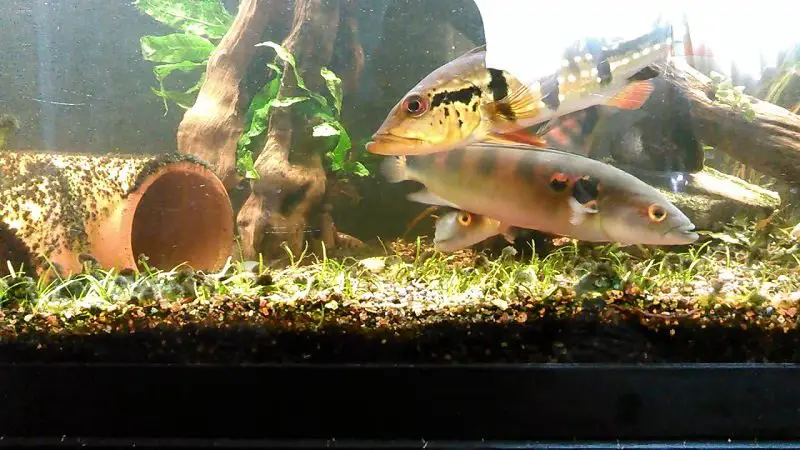
As with most species, conditions in the tank must be perfect for C. lenticulata to spawn. Raising the temperature gradually to 86°F might help to trigger some breeding behaviors. This species is a cave spawner, so a breeding pair will need their own cave. This offers protection for the eggs and resultant fry; it can also be easily defended by the parents.
The eggs will be deposited in the cave and the male will fertilize them. The female will stay with the eggs and tend to them, keeping them clean. The male will patrol the perimeter to keep other fish away. You may notice a few aggressive displays, but these are usually just to scare the other fish, not hurt them.
The eggs should take 3-4 days to hatch and the fry should become free-swimming a few days after that. At this point, they can be fed. Baby brine shrimp are a good source of food for the fry. They need something small and nutritious.
Keep an eye on the fry as they develop. The larger ones sometimes eat the smaller ones, so you may have to separate them into size groups.
All the fry should be separated from adult fish; otherwise, the adult fish might see the fry and think it’s feeding time.
Are Pike Cichlids Suitable for your Aquarium?
You can probably tell whether these fish are right for you by thinking about your past fishkeeping experience. If you’re new to the hobby, then a small peaceful species will be better suited for you, such as neon tetras.
If you have some experience under your belt and are feeling up to the challenge, even after reading this article, then you should go ahead and start your first C. lenticulata tank.
By designing the tank around their natural environment, and perhaps, more importantly, choosing the right tank mates, you will have a healthy aquarium for many years to come.
You might not experience any problems, but the trick is to keep a close eye on the tank so you can intervene should anything go wrong.
Have you had problems with your Crenicichla lenticulata? Tell us about them in the comments below…

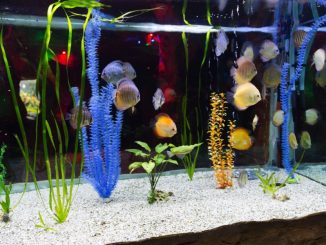
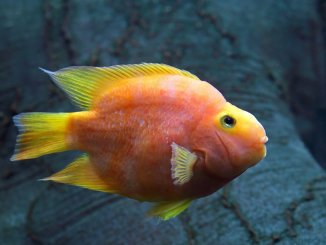
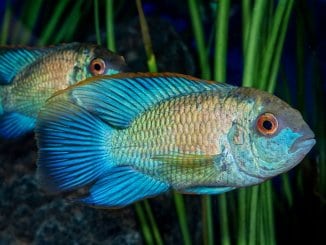
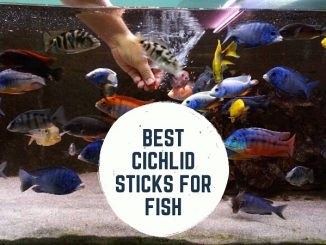
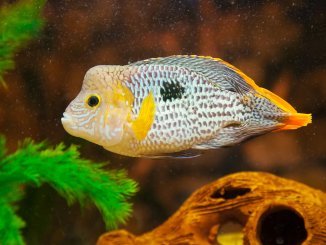
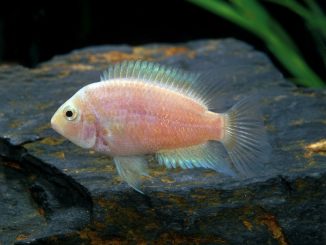
Thank you for this!! Ive had a pair of males from 2″ that are now 8″! and they are inseparable interestingly enough. They dig to make their “cave/tunnel” but after they pick a spot they don’t seem to dig much after their established.